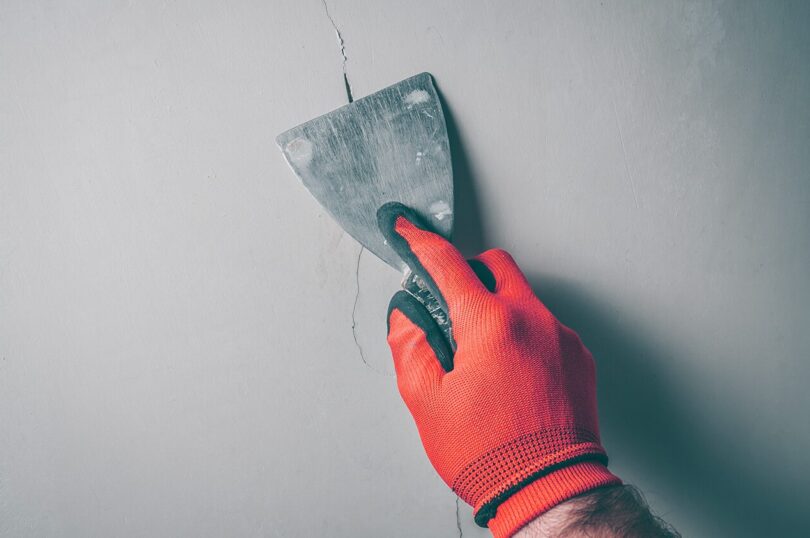Cracks may appear in the walls due to moisture problems. Rehabilitating this surface requires some DIY skills to fill the gap that has widened. Thanks to this guide, the ceiling or any other surface in the room will be smooth and free of imperfections.
Cracks in walls can be a cause for concern if they are not repaired. To do this, you don’t need a bricklayer but basic DIY skills to fill the holes. For a good seal, you should follow this step-by-step tutorial.
Crack repair requires a sense of observation.
Before proceeding with repairs, it is necessary to carefully analyse the extent of the damage when cracks appear. And for good reason, a problem that requires wall repair is not trivial. Filling the hole with putty is not a long-term solution to repairing a cracked surface. It is important to know the reason why the cracks appeared and to understand their origin. Understanding where the lack of waterproofing comes from, rather than applying a layer of plaster mechanically, will serve to improve the solidity of the walls and avoid these inconveniences. Taking care of your home makes us feel better. A few storage tips can quickly clear up.
Solving cracking problems depends on a number of factors.
When you want to proceed with the treatment of cracks, you have to look at the particularities of the latter. And for good reason, depending on whether they are on the outside or inside, visible cracks will need different repairs. It is also necessary to take into account the size of these holes but also their depth. These elements have an impact on the filling and renovation needed to smooth the wall.
How do you know that the wall has dangerous cracks?
As explained above, to fill these holes that may be due to water infiltration, several particularities such as size or depth must be taken into account. It is also important to understand the severity of this hole in the wall because there are several types of cracks. Micro-cracks are superficial and measure less than 0.2 millimetres wide. While they may be harmless, it is important to monitor them if they have appeared recently. The second category is small cracks that are between 0.2 and 2 millimetres wide. Care should be taken with the latter because they may be caused by inherent damage to the house. The size of cracks, also called crevices, is larger than 2 millimetres and is symptomatic of a structural problem such as a construction or foundation failure. And for good reason, this hole can deteriorate the strength of a roof or wall.
Please Head On keep on Reading (>)








